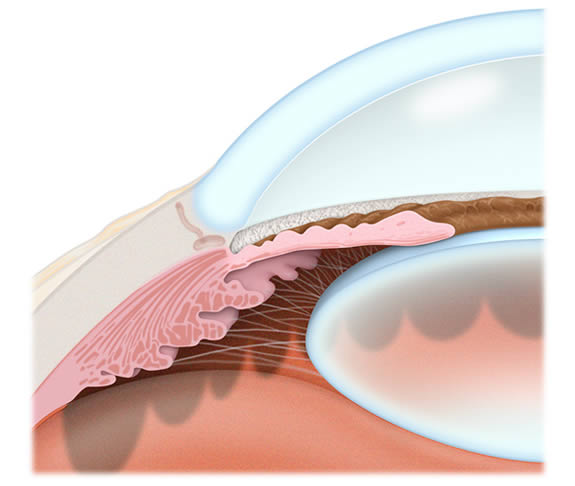What are the Symptoms of Glaucoma?
The symptoms of glaucoma depend largely upon which type of glaucoma you have. There are two main types of glaucoma: open angle and closed angle. Most cases of glaucoma are open angle. About 1% are closed angle (also known as narrow angle).
Open Angle Glaucoma Symptoms
Typically there are no symptoms in open angle glaucoma until late in the disease, when extensive irreversible damage has already been done.
Open angle glaucoma is a disease where fluid builds up in the eye creating pressure. The pressure in the eye causes damage to the optic nerve, which in turn causes vision loss. The eye pressure does not have to be very high – sometimes it is even normal – so generally the patient does not feel any pressure sensation or pain.
Open angle glaucoma development is usually a very slow process. It can take many years to develop. For this reason, the very slow loss of peripheral (side) vision is so gradual that it is often not noticed by patients until quite advanced. Late in the disease, patients may notice that parts of their vision are missing or that they are developing “tunnel vision” with a central clear area and loss of side vision.
The lack of symptoms until late in open angle glaucoma makes this disease very dangerous. Glaucoma is often diagnosed late and is one of the most common causes of blindness in the United States. Unfortunately, glaucoma damage is not reversible. Early detection with regular screening is the best way to prevent vision loss from this disease.

Closed Angle Glaucoma Symptoms
Most glaucoma is open angle as described above, and does not have symptoms. Closed angle glaucoma (also called narrow angle glaucoma) accounts for only 1% of all glaucoma cases, but is generally very symptomatic.
Patients experience a severe rise in eye pressure that can occur suddenly when the drain in the eye closes. These patients start out with less space near the drain of the eye, which becomes more crowded with age as the natural lens in the eye grows. Unlike the very gradual process of open angle glaucoma, closed angle can occur in hours.
Symptoms can include:
- Severe eye pain
- Blurred vision
- Halos around lights
- Redness of the eye
- Nausea and vomiting
Closed angle glaucoma is a medical emergency. It must be treated urgently with eyedrops, oral medication, and/or laser. If not treated promptly, permanent vision loss or blindness can occur. Closed angle glaucoma may occur in both eyes at once, or start in just one eye.

Regular eye exams can prevent angle closure glaucoma. A narrow angle, one that is at risk of closing off and causing closed angle glaucoma, can be detected on a screening exam. This can be treated before glaucoma occurs in order to prevent angle closure glaucoma.
How can I prevent vision loss from glaucoma?
The key to preventing vision loss from all types of glaucoma is early detection. The risk for glaucoma goes up with age. Family history of glaucoma also increases risk. We recommend screening about every 3 years in your 40s, every 2 years in your 50s, every 1.5 years in the 60’s and annually over 70, but more often if certain risk factors are present.
For more detailed information on Glaucoma and how Glaucoma is diagnosed and treated please select a topic below:

